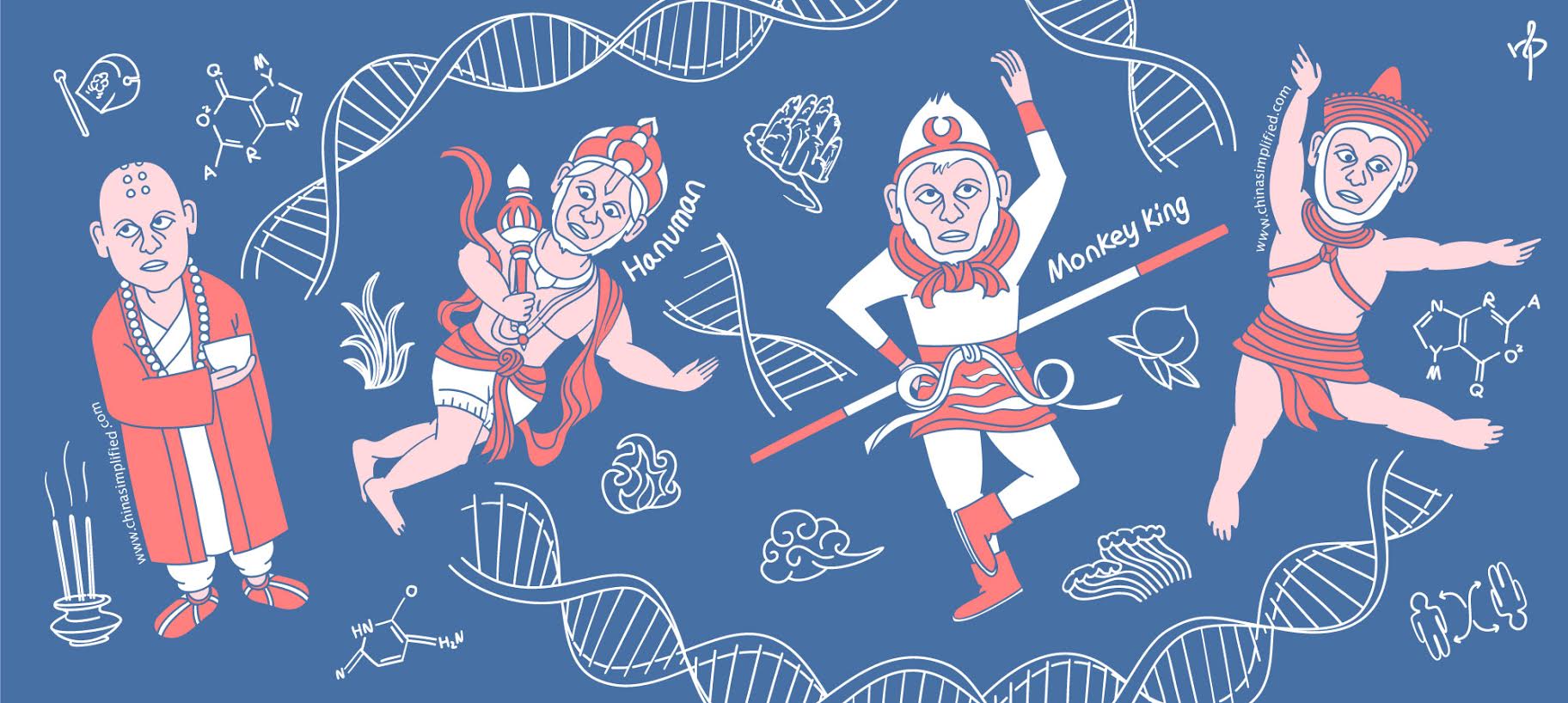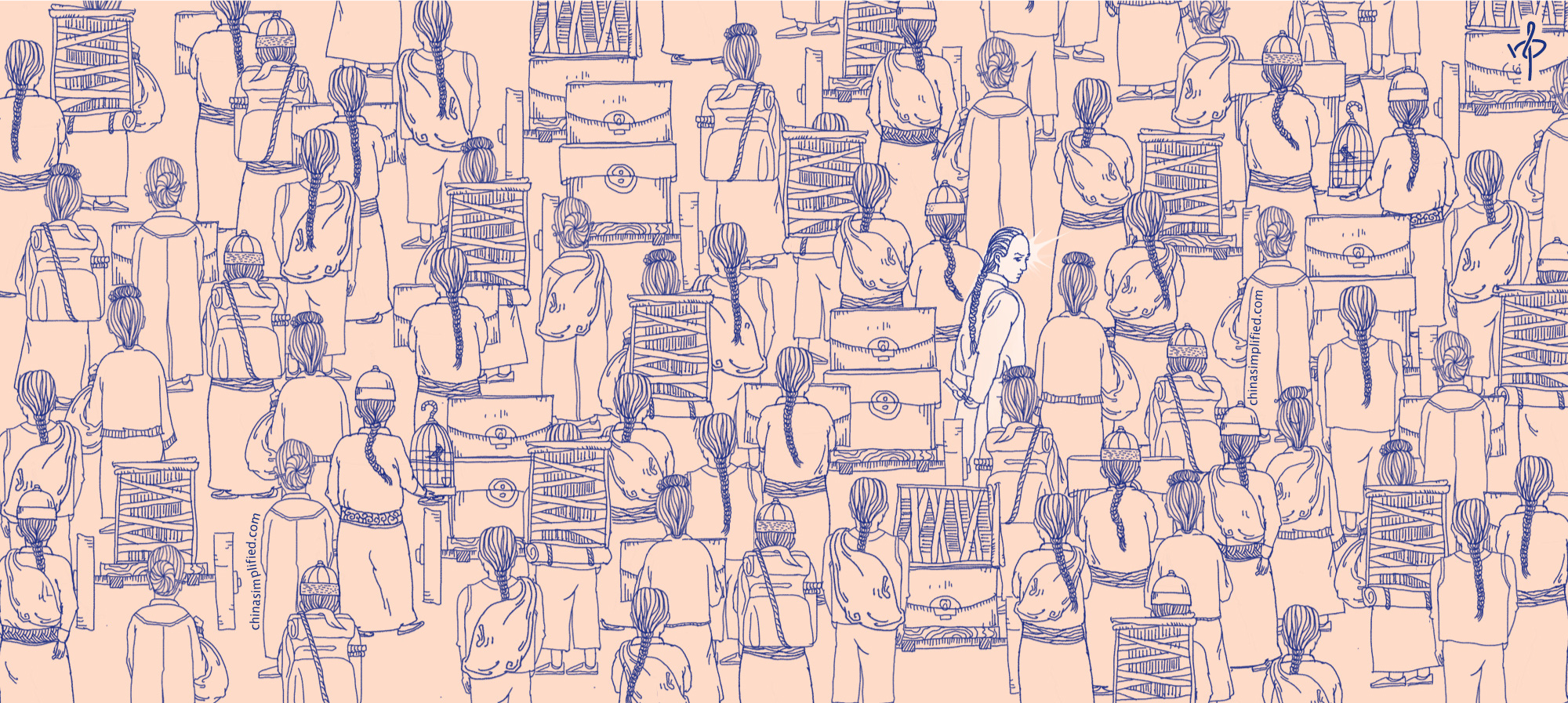Sinophiles who’ve yet to read the Journey to the West (西游记, Xīyóujì) can still recognize the novel’s shapeshifting protagonist by name. Ming Dynasty (1368-1644) author Wu Cheng’en based his fictional masterpiece on the 17-year journey of a real-life monk named Xuanzang, tasked by Emperor Taizong of the Tang Dynasty (618-907) to bring a collection of Buddhist sutras back to further enlighten China.
The basic Xiyouji story arc: Sun Wukong (孙悟空, Sūn Wùkōng) aka the Monkey King, paying penance for past misdeeds, agrees to make this perilous journey as the monk’s protector and unruly troublemaker, accompanied by side characters, Pigsy and Sandy. In the end, he proves his worthiness and earns a high place in heaven, overcoming his previous reputation as a divine troublemaker and constant thorn in the side of the Jade Emperor.
In Joseph Campbell parlance, Monkey plays the trickster, the perfect foil to Xuanzang’s infuriating centeredness. It is Monkey’s unpredictable nature most endears this furry superhero to us. We love his flaws, his jealous nature, his epic realness. He aspires to great heights, yet remains his own worst enemy. After all, we go to the theater to watch the otherwise normal Dr. Jekyll transform into the lunatic Mr. Hyde. That’s when the fireworks happen!
Meet Hanuman, the Monkey King’s “big brother”
Many centuries before the story of Sun Wukong materialized in China, the Hindu monkey god Hanuman made his journey to the East. Carried by the maritime Silk Road, Indian traders and monks introduced their beloved monkey warrior to the Chinese through art and storytelling.
The Hanuman mythology interweaves numerous legends to present a fascinating character, multifaceted like most Indian deities, known for nearly everything from demon destroyer to celibate intellectual. Let’s compare India’s Hanuman with China’s Monkey King:
| Sun Wukong | Hanuman |
|---|---|
Born as a stone monkey, emerging from a stone egg after being exposed to a powerful wind. | Son of the wind god, Maruta (also called Vayu). |
Name means “understands the nothingness.” | Name means “one with disfigured jaw” in Sanskrit. |
In his youth, ate the Queen Mother’s immortal peaches. | As a child, thought the sun was a mango and tried to eat it. |
Imprisoned under the Five Elements Mountain by Buddha. | Carries a mountain with life-restoring herbs to a battlefield to save an ally of Lord Rama. |
Recruited to accompany Xuanzang on his Journey to the West. | Constant and devoted companion to Lord Rama. |
Mentored by Taoist monk Subodhi. | Mentored by Surya the Sun God. |
Can make 72 transformations into animals and objects. | Can shrink to microscopic sizes and enlarge to mountain size. |
Leaps through the clouds. | Travels as fast as the wind. |
Magically changes his hairs into anything, even copies of himself. | Celibate in Indian texts but gets busy with demons in the Thai version. |
Develops smoke weakness after Laozi locks him in the Eight Trigrams. | Blissfully unaware of his superhuman abilities until memory reminds him. |
Deified as “Buddha Fighting War to Victory” after success of journey. | Eulogized in the Hanuman Chalisa book of hymns. |
Still adored by monkey fans. | Still adored by monkey fans. |
So was the Monkey King a foreign import? Hera S. Walker explores the origins of Sun Wukong in the Sino-Platonic Papers and concludes that monkey legends pre-existed in China, providing a foundation on which corrupted and distorted fragments of the Indian Rama saga could be added. Wu Cheng’en later drew upon this rich oral tradition to create his epic Xiyouji.
Scratching our Primordial Itch
There’s much more to Monkey’s heavenly antics, all of which point to the very human lessons contained in Buddhism: impermanence, suffering, detachment…form is emptiness and the very emptiness is form. Even the name “Wukong” basically means “to understand the nothingness.”
Perhaps it is this profound truth, along with the natural desire to connect with a powerful protector, which continues to resonate with many Chinese. In parts of Fujian and other parts of SE China, people continue to worship the Monkey King.
Our furry superhero has become an inextricable part of the culture.










In some parts they are culturally accepted as both the same, for example Thailand and Nepal. See this documentary about Hong Kong: youtu.be/qxF6i190Reo
Also in many parts of Journey to the west, subplots seem to be inspired and exaggerated by Wu Cheng’En from the Ramayana. However, Tripitaka was a real person and there are also many Indian tales of Kings and saints who were protected by Hanuman. Tripitaka coming into contact with Hanuman would make sense.
Hey SaleSS,
Thanks for sharing the link and your knowledge. I watched the first episode of the doc you linked; I liked seeing the social aspect of the Monkey King in Hong Kong, with the large festival.
Did you shoot the film?
Looking forward to seeing more,
– The China Simplified Team
Google hindu mythology and Greek mythology.
They are also similar!
I believe that Greek/Romani and Chinese people are also indian.
The Indian Vedas also has tales about chinese people (people with yellow skin went to east start farming that land )
https://www.quora.com/What-parallels-can-we-draw-between-Indian-Greek-Mythology
Thanks for your comment and sharing the link. Interesting material! The many commonalities across ancient cultures continue to fascinate us. A result of identical ancestry or similar life experiences? We may never know. If you haven’t seen it, the Bill Moyers interview series “The Power of Myth” with Joseph Campbell explores this topic way beyond Indian/Greek/Chinese to include native cultures worldwide. And you guessed it, the myths remain the same.